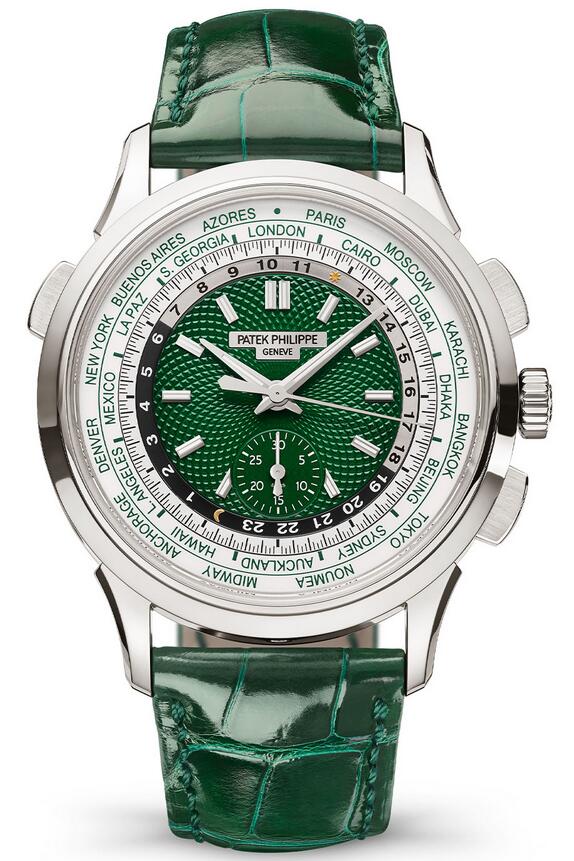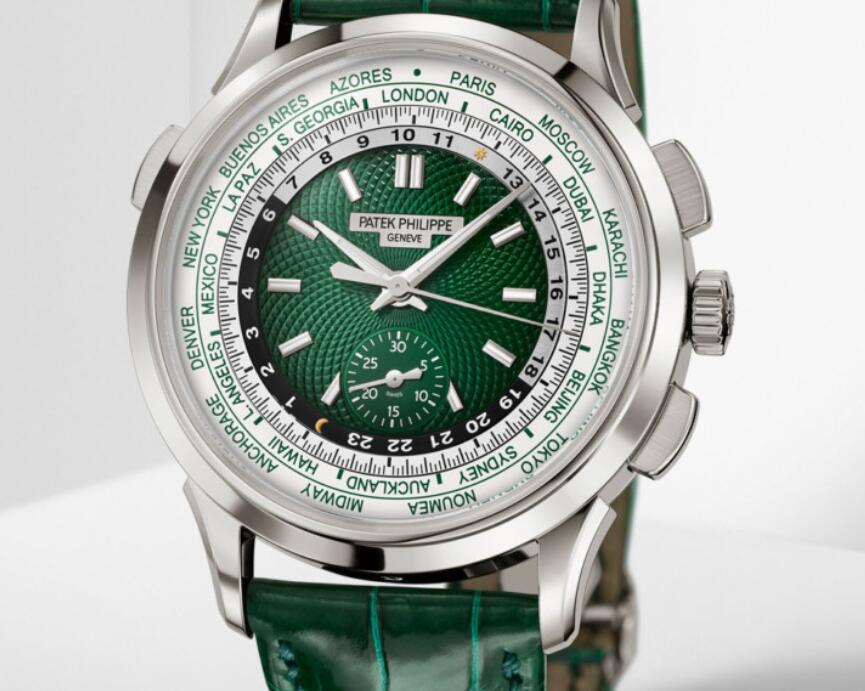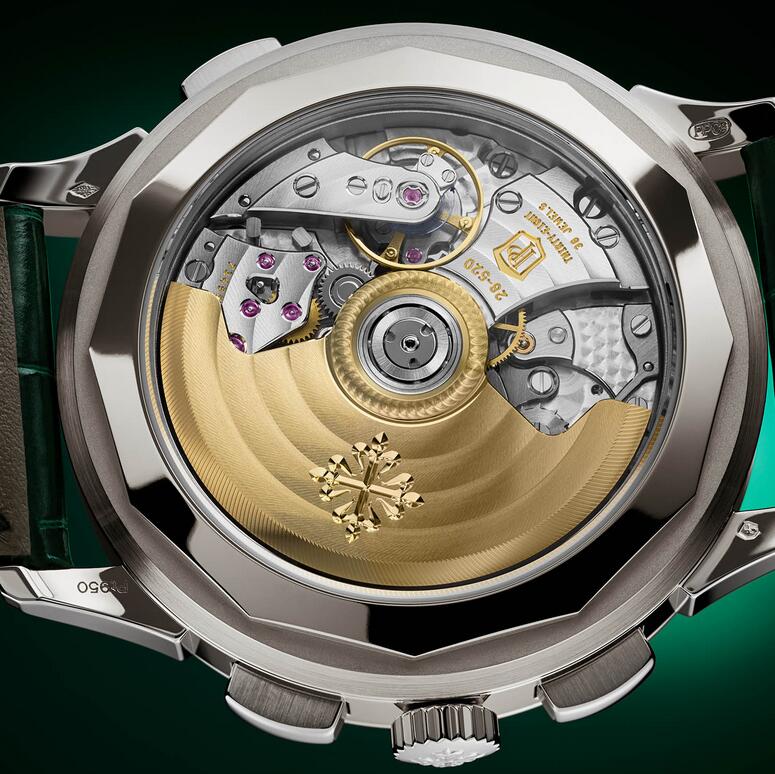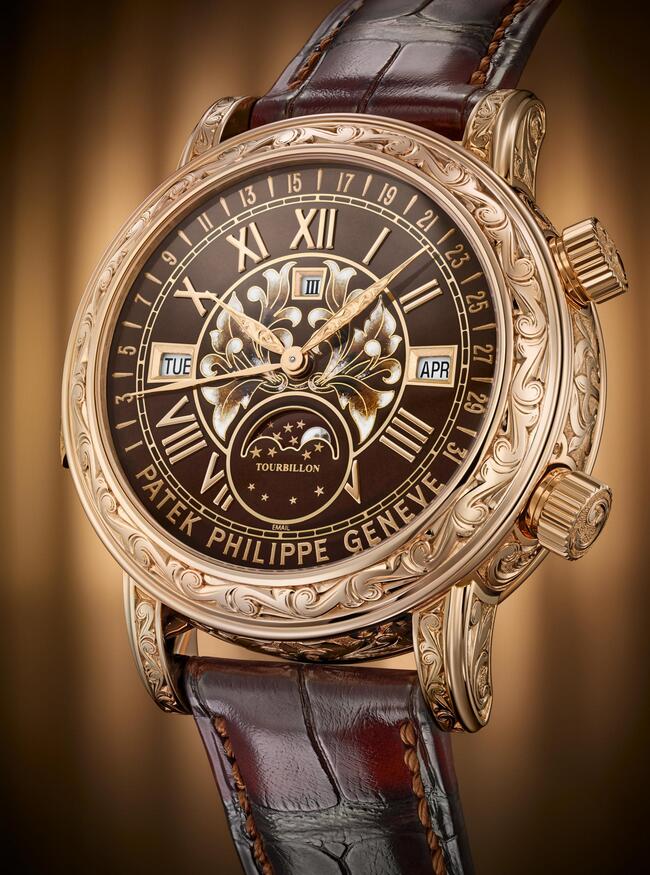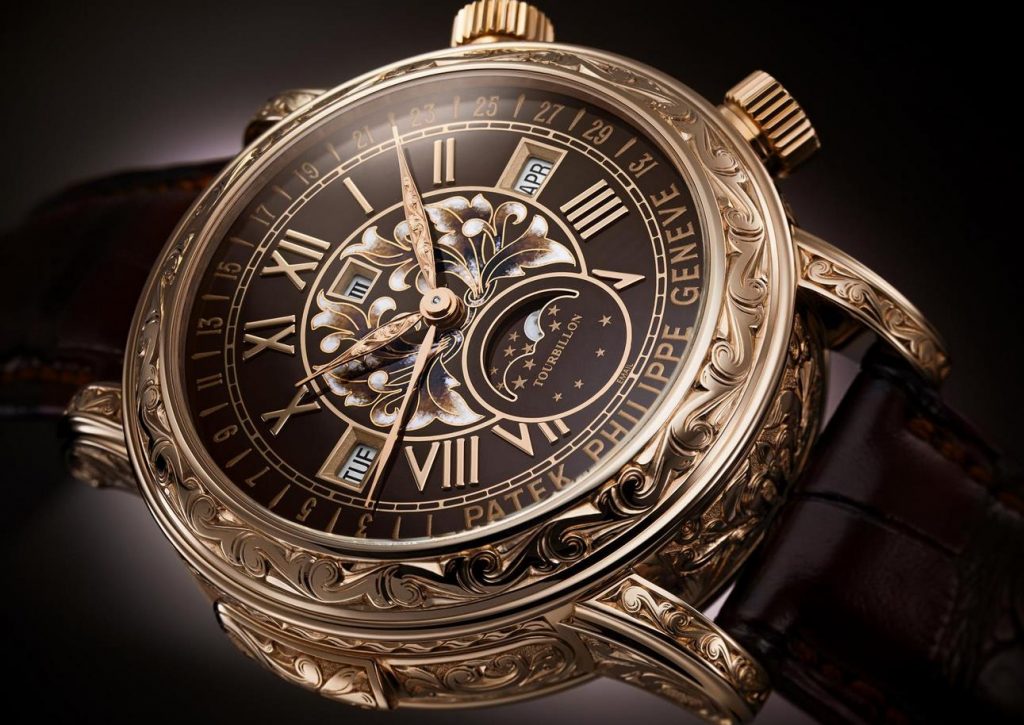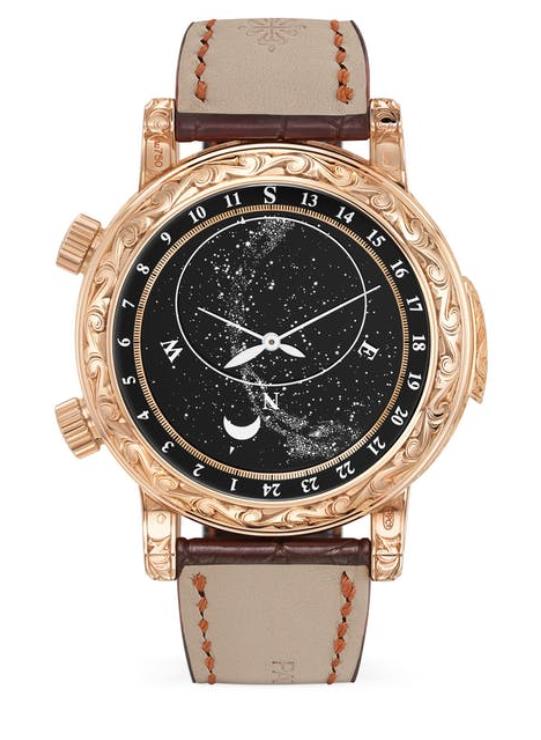The luxury replica Patek Philippe 5930 World Time Chronograph watches was first introduced in 2016, being inspired by a one-of-a-kind watch from 1940. It combines the practicality of a chronograph function with that of a world timer. The two iconic complications in Patek‘s repertoire are now presented in an updated, green-coloured platinum version. This is the UK top fake Patek Philippe World Time Chronograph 5930P watches.
When it was launched 5 years ago, we were very impressed with the finesse of the Patek Philippe 5930G World Time Chronograph replica watches for sale. Dressed in white gold, with a blue dial, it was everything you’d expect from the Maison in a traveller’s chronograph 1:1 best fake watches, and more – and also with a bit of modernity in it.
Patek Philippe copy watches with Swiss movements has decided it was time for the white gold 5930G to be joined by a platinum sibling, the 5930P. The habillage remains the same, except it is now made in platinum of course – as attested by the diamond between the lugs at 6 o’clock. It still has a rather modest 39.5mm diameter with 12.86mm height, which is in fact quite impressive for such complicated high quality fake watches. The case has three pushers spread around its caseband; two for the flyback chronograph and one for the world timer display.
The subtle blue dial has been changed to a more vibrant, and dare I say it trendy, green dial. The hand-applied circular guilloché pattern is extremely refined and comes with applied gold hour indices. The central Dauphine-style hour and minute hands are paired with a chronograph seconds hand. In the lower half of the green centre section, there is a 30-minute chronograph counter.
Moving outward one step, we find a two-tone day/night and 24-hour ring. Nestled in between that ring, and the outer city ring is the black on white chronograph-seconds track. And lastly, the outer ring shows all 24 time zones with corresponding cities, printed in green.
The perfect replica Patek Philippe 5930P World Time Chronograph watches is powered by the Calibre CH 28-250 HU. This in-house flyback chronograph world timer movement uses 343 components, including 33 jewels, and measures 33mm in diameter with a height of 7.97mm. It runs at a frequency of 28,800vph and provides 50 to 55 hours of power reserve. The movement, topped with a 21ct gold winding rotor, can be admired through the sapphire crystal caseback.
The AAA wholesale super clone Patek Philippe World-Time Chronograph 5930P-001 watches is worn on a shiny, bottle-green alligator leather strap with a platinum fold-over clasp. It retails for EUR 87,500.

